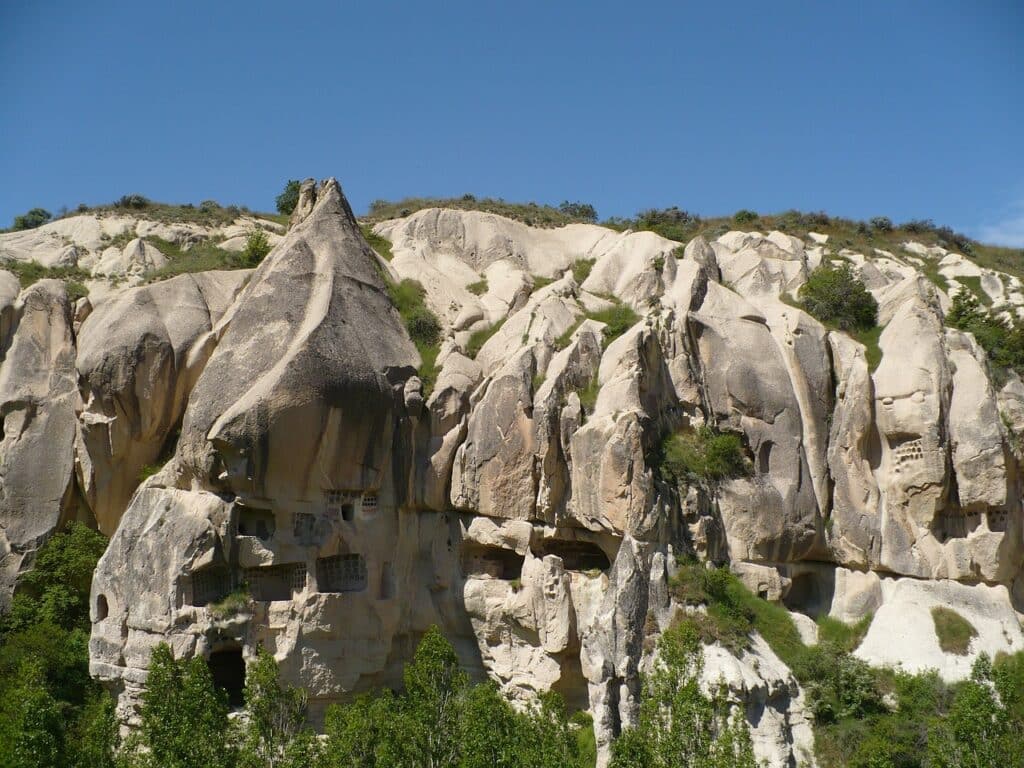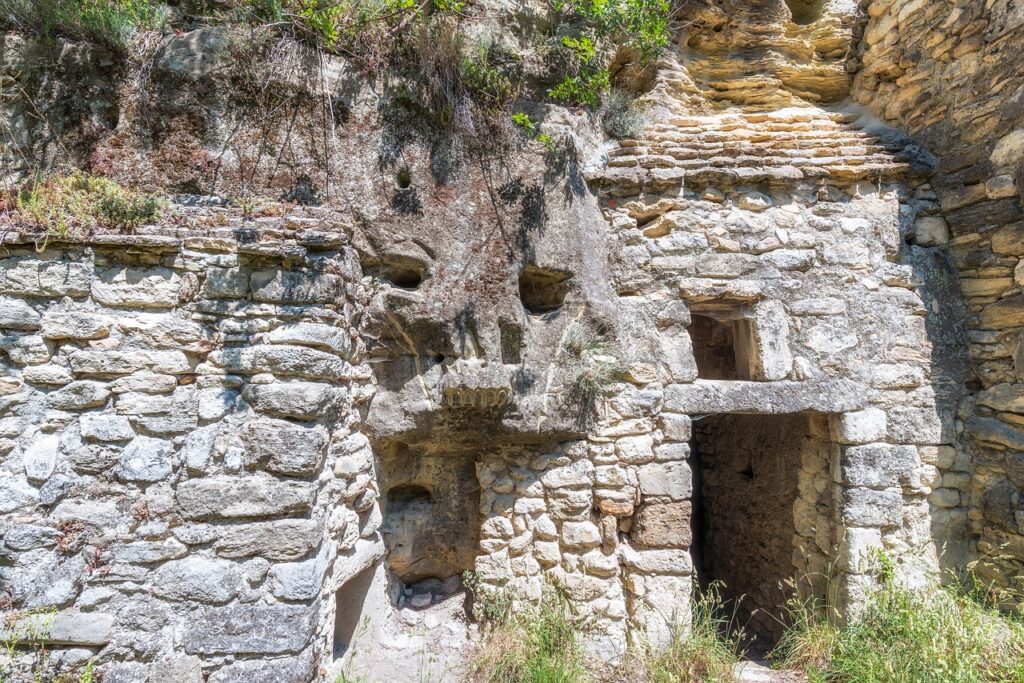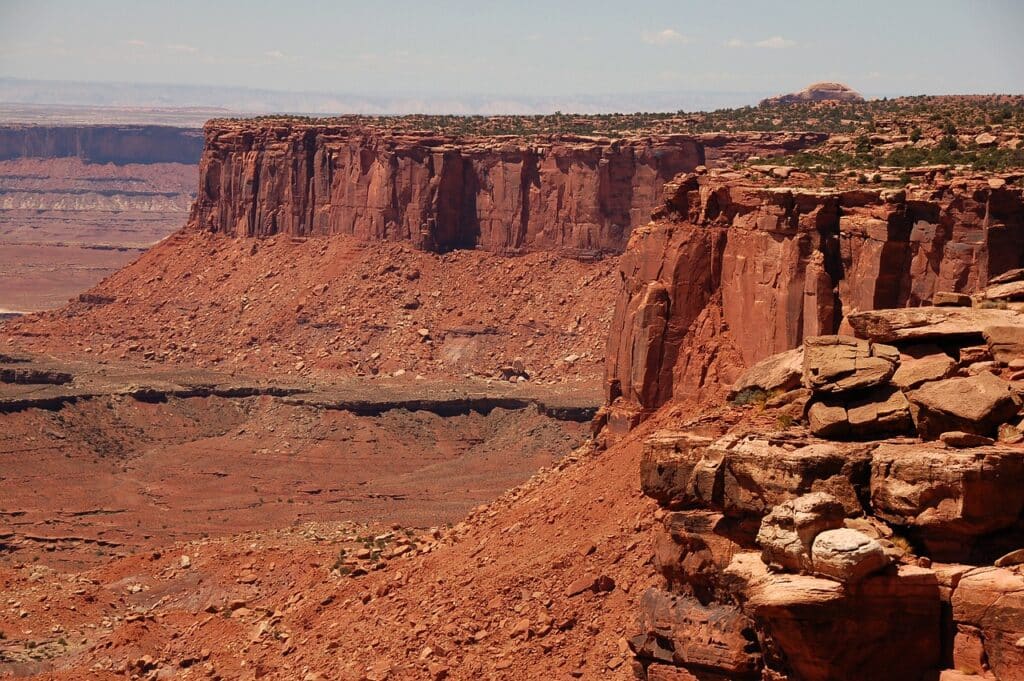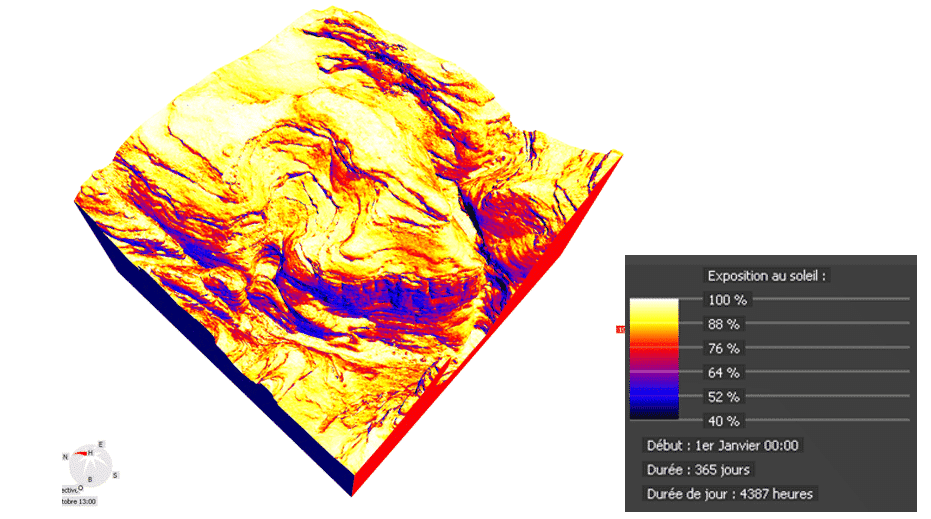Accueil » Climatic engineering » Indoor comfort modeling » Sharaan by Jean Nouvel resort
Sharaan by Jean Nouvel resort
Study of natural ventilation in a troglodyte hotel in the Saudi Arabian desert
EOLIOS’ in-depth study has enabled us to precisely determine the microclimates of a naturally ventilated troglodyte hotel in the Saudi Arabian desert.
Sharraan by Jean Nouvel resort
Year
2023
Customer
Jean Nouvel - Terell Group
Location
Saudi Arabia
Typology
Hotel
Continue navigation :
Our other projects :
Latest news :
Project background
SHARAAN is a project designed by French architect Jean Nouvel. This ambitious project aims to build a hotel on a rocky mountain in the Al-Ula desert in Saudi Arabia. The major challenge is to preserve the landscape of the Sharaan nature reserve while incorporating a hotel complex with modern architectural concepts.
In the context of this exceptional project, led by the Jean Nouvel and Terrel studios, EOLIOS was able to carry out a global study of the site to precisely characterize the resort’s aeraulics (site microclimates, internal air movement, thermosiphon effects, etc.) in order to define a unique global natural ventilation strategy with the aim of harnessing the “energy of the mountains”.
The challenge of a cave dwelling
Troglodyte dwellings are dwellings either below ground or dug into the rock on a mountainside. This is the idea that Jean Nouvel used for his palace in the desert. This type of home boasts excellent thermal insulation thanks to the surrounding rock. In this way, temperatures remain stable: warmth is preserved in winter and coolness in summer. What’s more, these dwellings are solidly built in rock.
Desert microclimates
The climate in the project area is dry, with rainfall not exceeding a hundred millimetres. The desert is very hot in summer and very cold at night in the cold season(night frost). The desert canyons and ravines in our study often offer cooler, wetter microclimates due to their ability to retain moisture and provide shade. This can lead to denser vegetation and more diverse ecosystems.
Deserts are home to a multitude of highly specific microclimates, which can vary significantly even over short distances. As a result, certain species of plants and animals have managed to adapt and thrive by exploiting these particular microclimates despite the harsh desert conditions. These climate variations create cooling potentials associated with troglodyte architecture and different micro-climates. It is then possible to use micro-climates to enable effective bioclimatic control in complex environments such as deserts.
Micro-climate studies
Climate studies are needed to determine general trends on the project site. Heliodons were used to determine thesolar exposure of the site, and wind speeds were recorded at the nearest weather station.
Sun exposure
In the project area, thermal variations of surfaces relative tosolar irradiation can lead to local microclimates.
As a first approach, in the simulation we consider the base of the canyons as not very sunny, in order to take advantage of microclimate effects. A more detailed analysis should enable us to refine these sectors more precisely.
Wind characterization
This unique project, at one with the mountain’s elements, is inspired by and uses the wind at its heart. Jean Nouvel himself says it best. The wind has a real impact on the mountains of this desert. Patterns can be seen in the rock due to its passage.
The annual wind rose enables us to determine the project’s prevailing winds and their maximum amplitude, and to carry out studies in the most unfavorable cases. Our studies have enabled us to take precise account of the local effects of the mountain inducing air movements at the heart of the hotel complex.
On-site CFD simulation
The CFD simulation was carried out using a complete model of the hotel and the surrounding environment. This model is based on the geometry of the site and the mountains. It is based on the des model produced by the Jean Nouvel workshops. The resort’s interior ducts are also modeled to allow precise study of natural ventilation.
The challenge of the project is to excavate the rock and create spaces with a high level of comfort. The two major problems in this desert, apart from digging into a mountain, are the very high ambient temperatures and the wind (and its gusts). CFD can be used to simulate pressures, air movements and temperatures at any point on the site.
- Temperature study
Temperatures should remain pleasant and much lower than the extreme outside temperatures of deserts.
- Indoor and outdoor wind studies
Inside the palace, the simulations provide wind current lines outside the site, as well as general air displacement trends.
Continue on this topic
Discover other projects
Wind impacts on high-rise buildings: Tours Olympiades in Paris
Comfort – Rooftop of a palace – Casablanca
Tour Liberté – La Défense
Impact of wind on a solar power plant
Cooling towers – ICPE
Pedestrian comfort study – La Défense
Confort au Vent – PSG training center
Wind study – La Défense
Fine particle capture in a metro station
Sharaan by Jean Nouvel resort
Air coolers – Critical study – Heat wave
Fine dust measurements
Balenciaga – Wind potential










